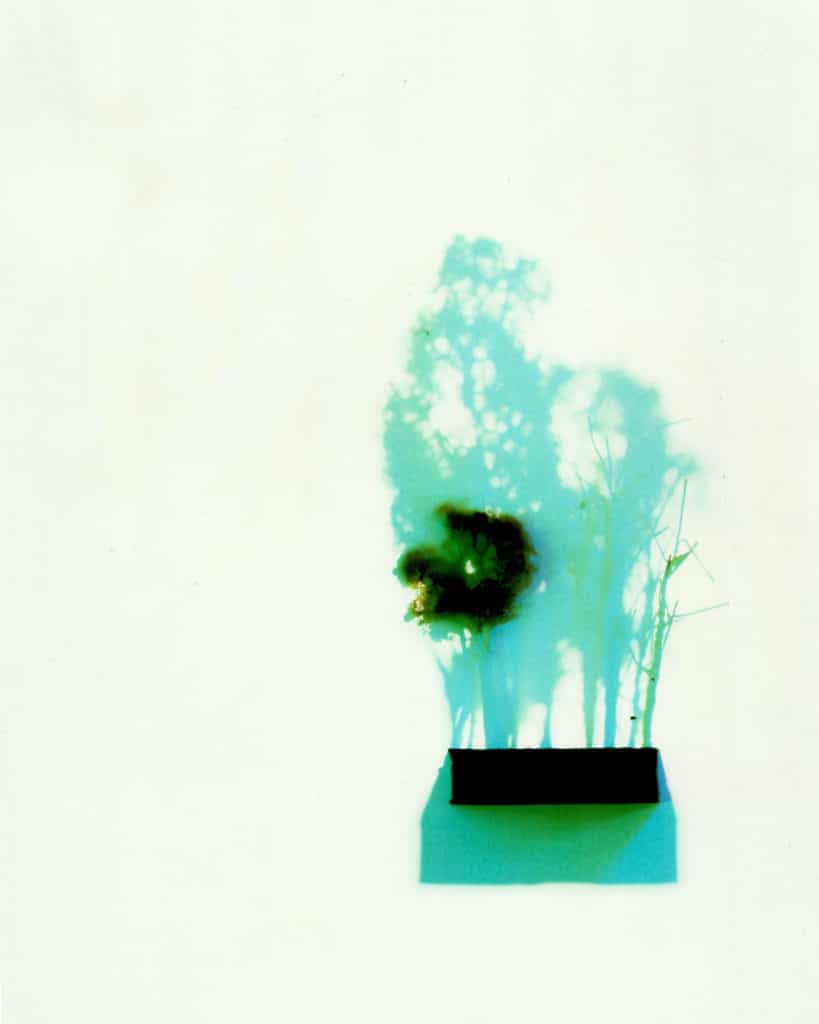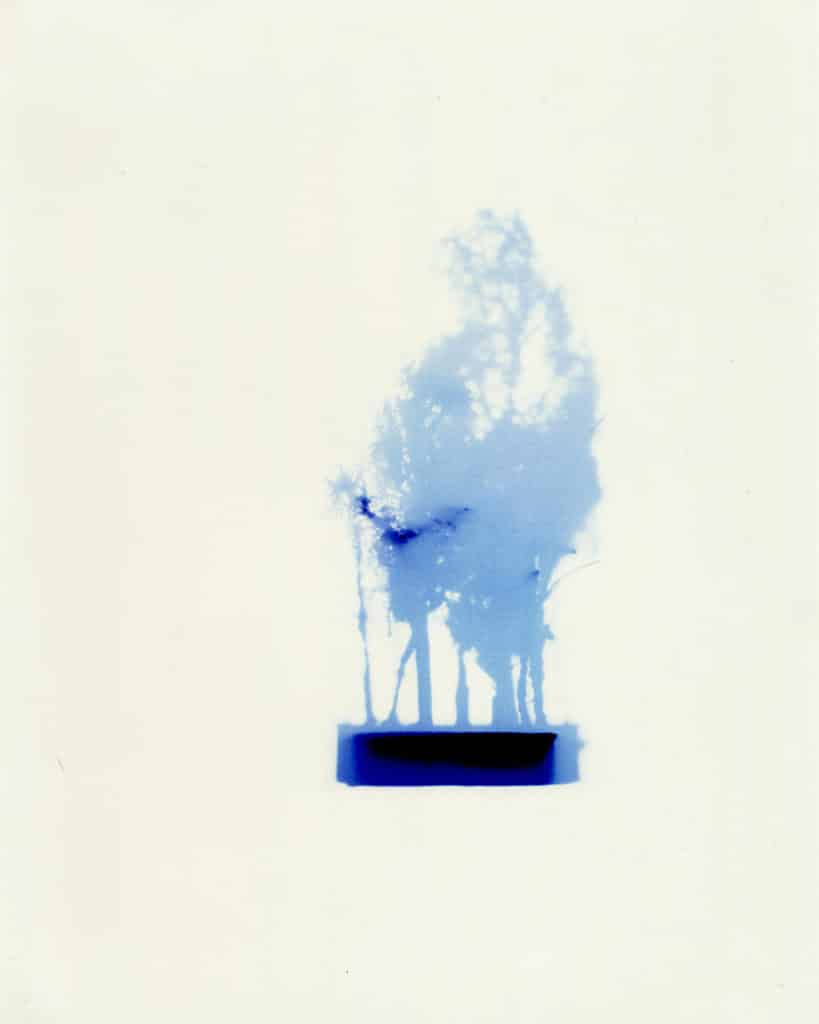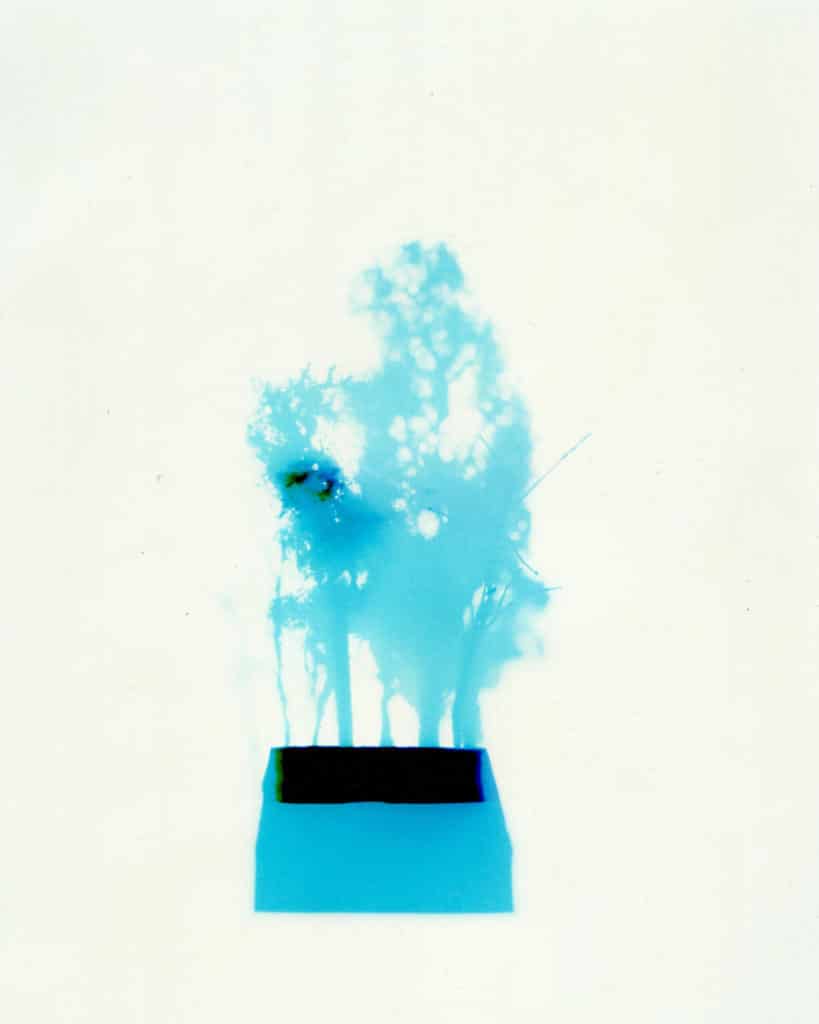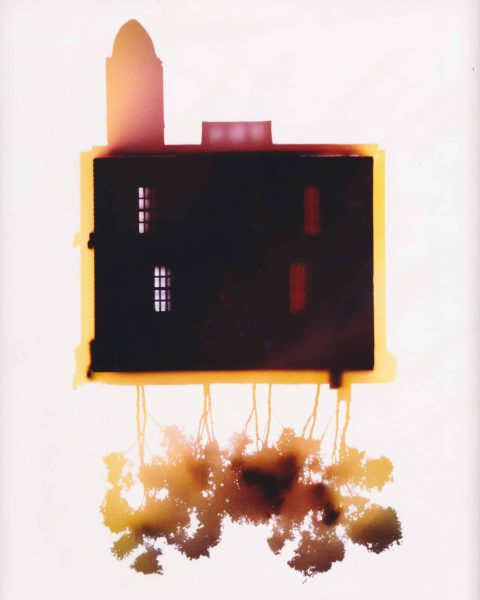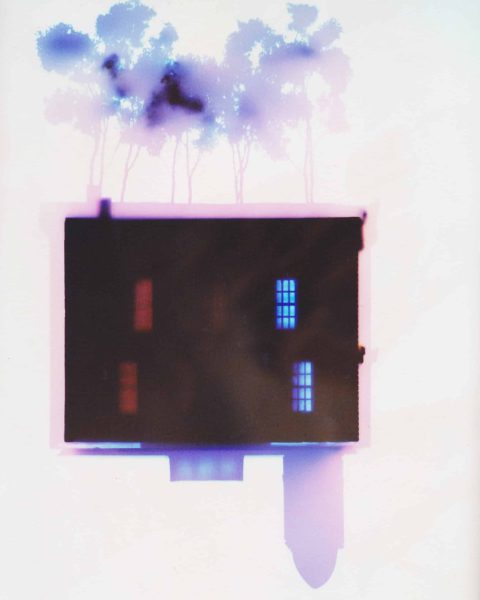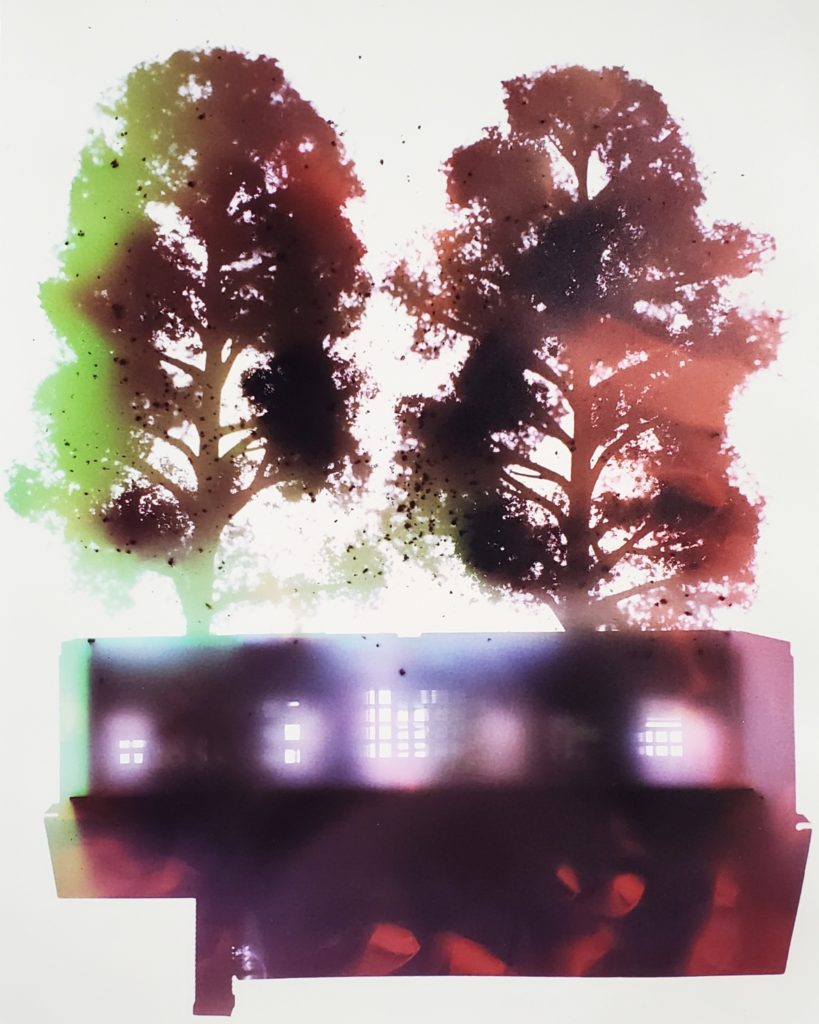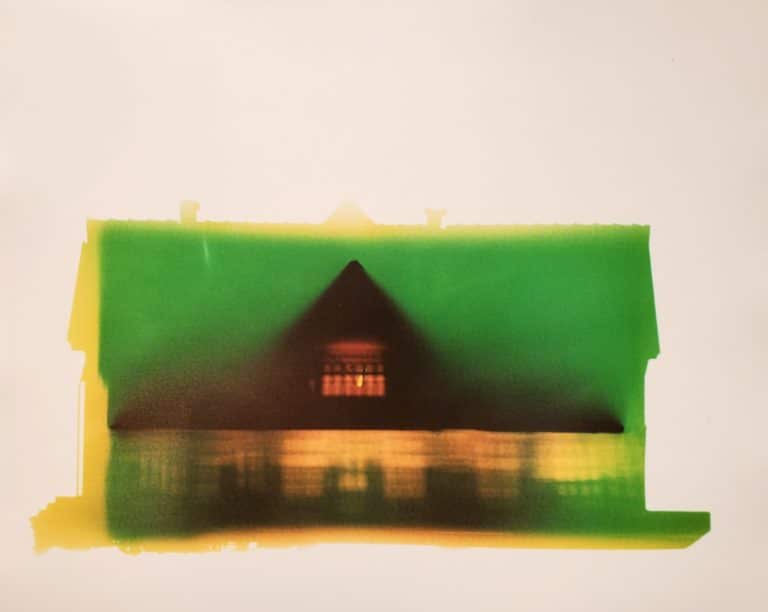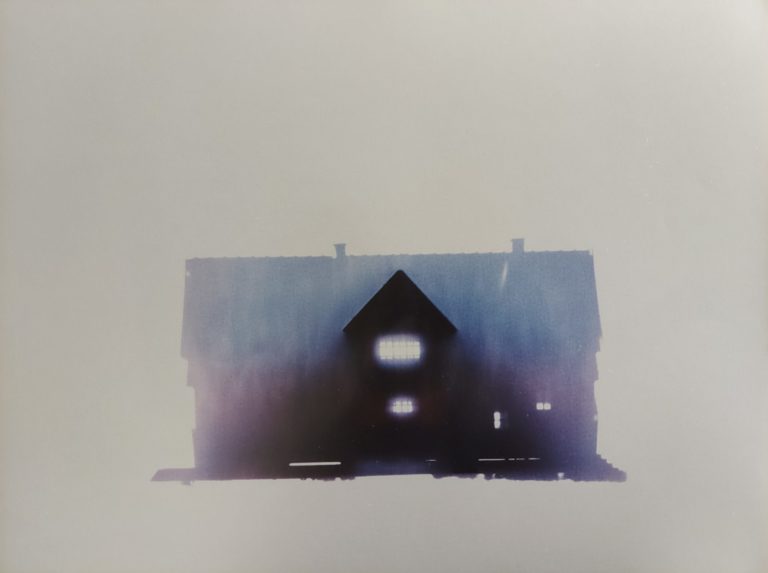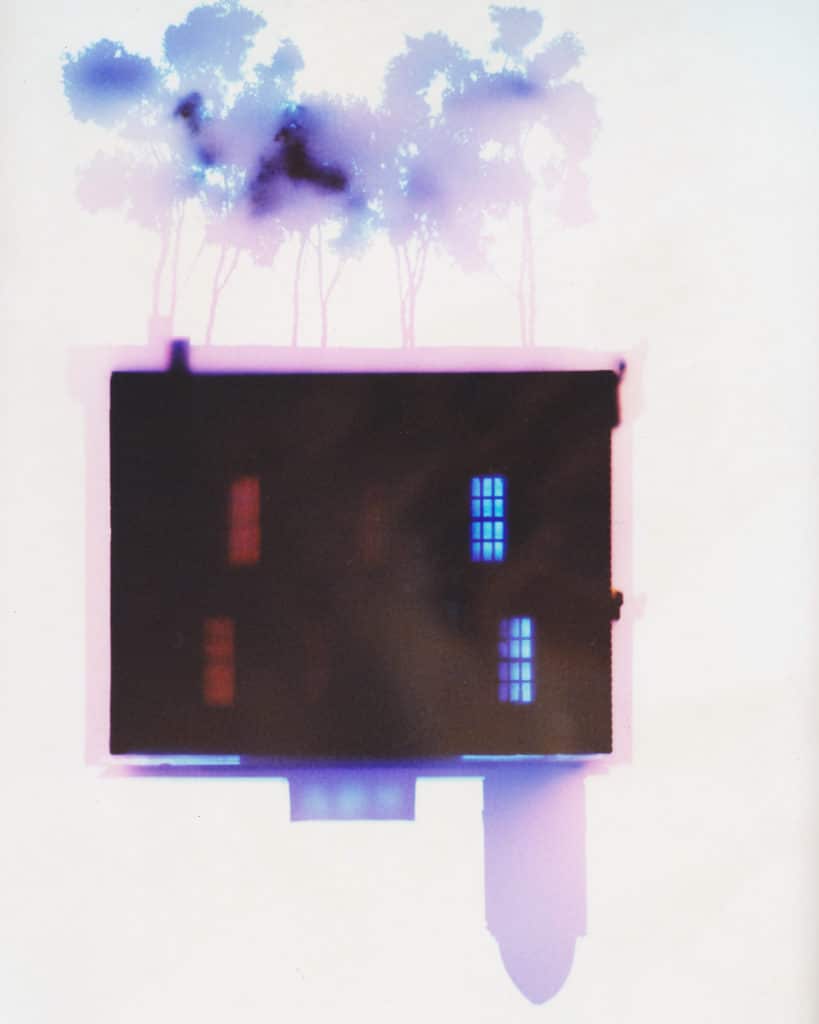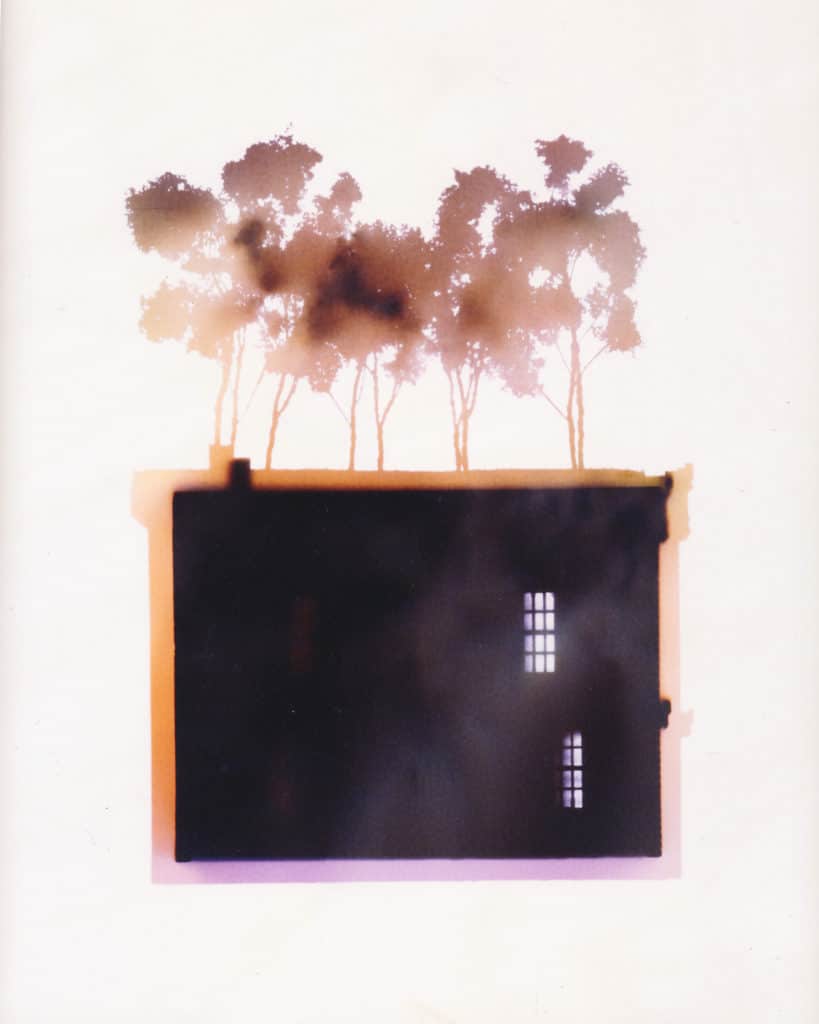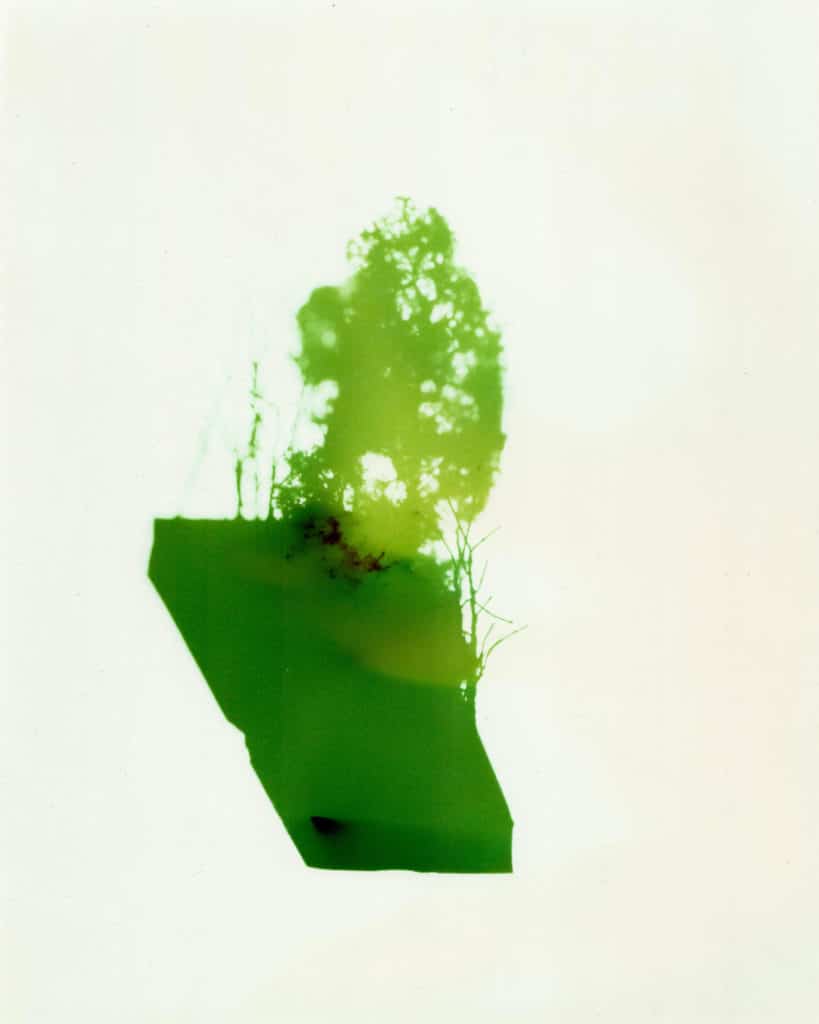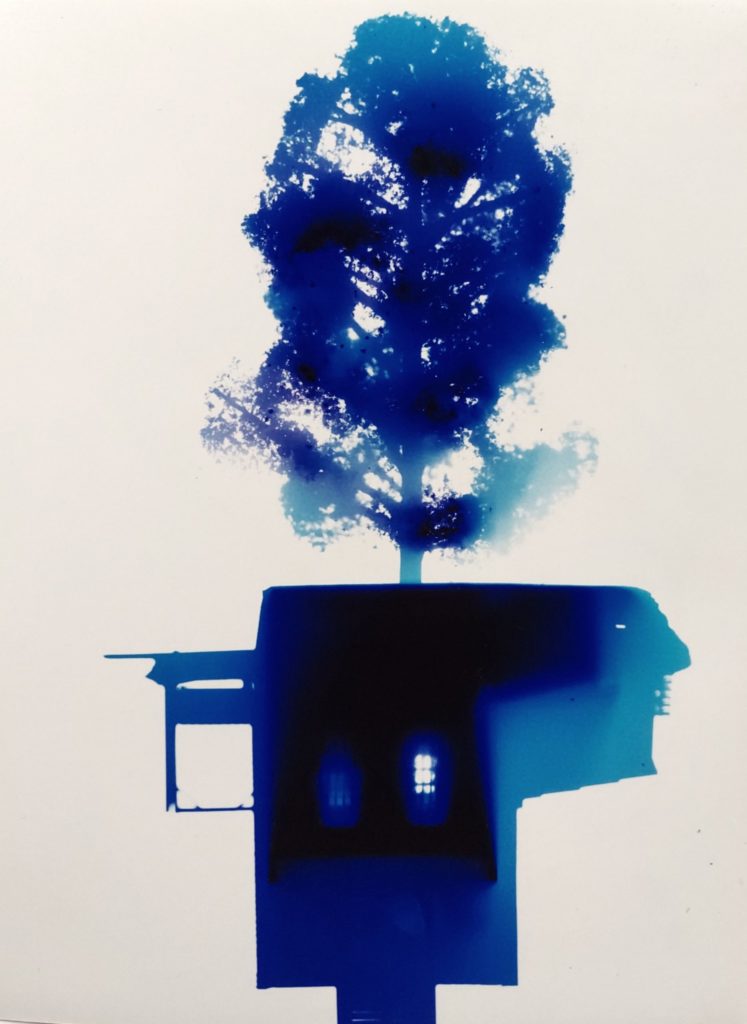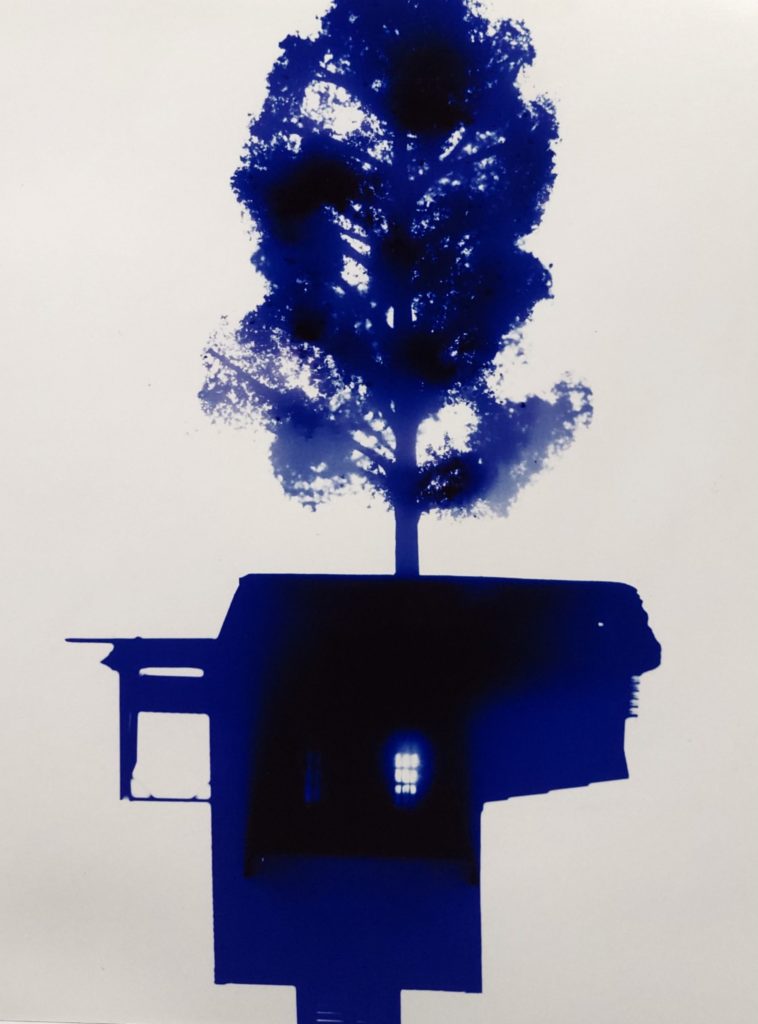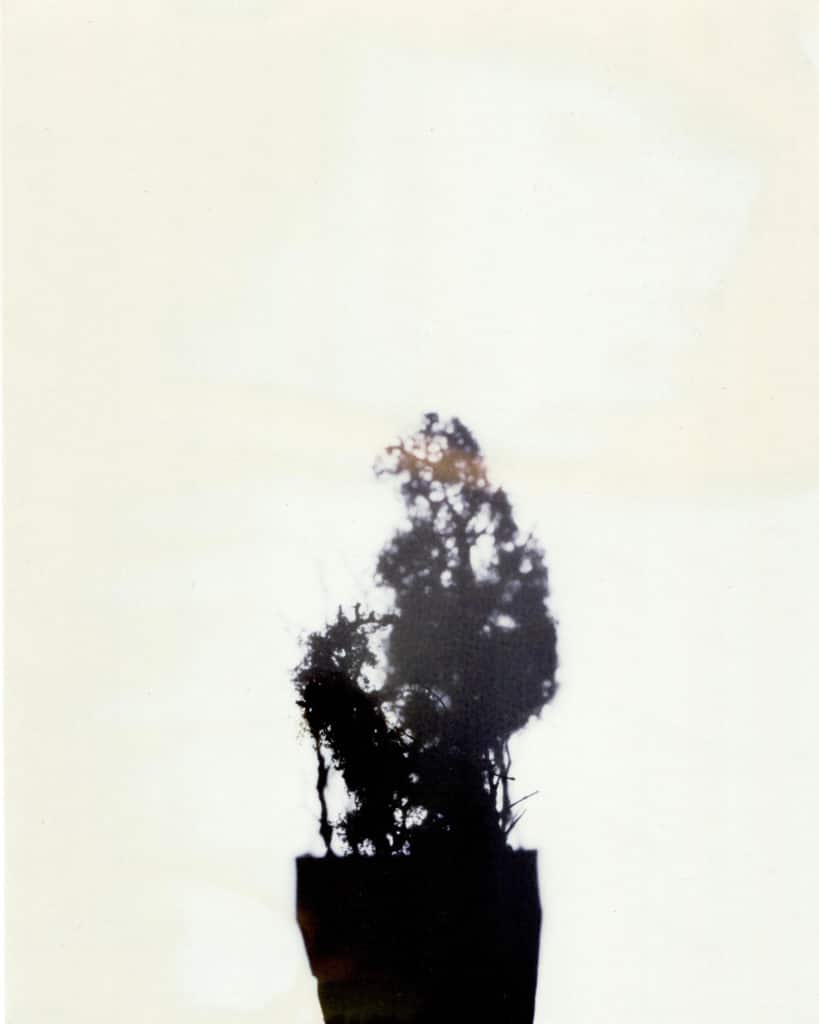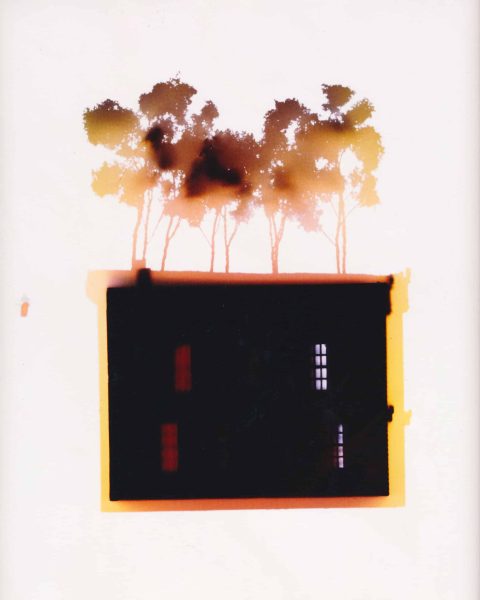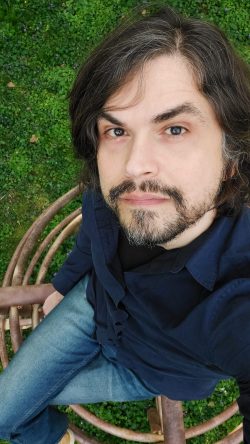All images in gallery, unless otherwise noted, are RA-4 reversal photograms. Wet process chromogenic prints. From ‘Home and other Stations’
2021-2022
Rules of the game. How to play:
1- You can’t stay long. A home is a station. A stop on the way to your next destination. Don’t invest too much time there. It may fade away.
2- The videos are made from stills of the same house or tree done in a slightly different way. It’s like a flip book, or a deck of cards. After a few seconds, you can’t flip them any longer. What are you left with? The deck could be used to tell fortunes. Each manifestation of the house is unique. You sun yourself on the deck. Call it a porch.
3- You can’t enter the house. You can get close, but it’s flat. The light shines through: it may look sunny, but it’s deceiving.
4- You may want to climb a tree. The branches won’t lead to a window. The tree has roots inside the house.
5- The trees are shadows. Remember the light, remember the time spent outside. Just you and the object. If you spill something, it creates the shape of a cloud. So you pour it on film. You didn’t use a camera, but you remember the clouds. It lifts off. You look around. You lie awake.
Each image is unique: the house may be the same, but the gradations of color and shadows are different. These multiple images are then scanned, animated, and analyzed. They are structures without a landscape and may appear to be flat or have empty interiors, yet the light shines through, with degrees of both menace and revelation.
"The Tenants / Field-Work" 2021 Video made of animated RA-4 reversal photograms.
My work with chemigrams is done by spraying then guiding traditional darkroom chemicals onto the surface of photographic film. A monoprint is created as the chemicals crystallize, blacken, and warp: all reacting with the photo emulsion. It’s a perverse treatment of the material since there is no negative, lens, or camera involved.
From 'Lie Awake Dirge' 2022 Video made from a roll of unprocessed 35mm orthochromatic film that had traditional darkroom chemicals sprayed and guided onto it.
These chemigrams are not a reproduction— it’s only partially ‘writing with light’ (since developer is used on emulsion), but what is more enlightening is what’s latent; written with accidents.
Ahmed Salvador received his MFA from Cranbrook Academy of Art in Bloomfield Hills, Michigan and his BFA from The University of the Arts in Philadelphia, Pennsylvania. He is a photography instructor at Fleisher Art Memorial, also in Philadelphia. Ahmed has shown his work both solo and collaboratively (with Scott McMahon) at the Halide Project, Space 1026, with InLiquid, and at the Sol Mednick Gallery in Philadelphia. Additionally, works have been shown at the ViPhotofest in Vitoria-Gasteiz, Spain, Columbia College’s Hardwick Gallery in Missouri, and at the Palace of the Governors in Santa Fe, New Mexico. Online features, also both solo and collaboratively, include Outlast Journal, Experimental Photo Festival, the Flying Fruit Bowl, and with Tied to Light Collective.
You can see more of Ahmed’s collaborative work at https://www.fireflyletters.com/ and find him on Instagram @ahmedasadsalvador
